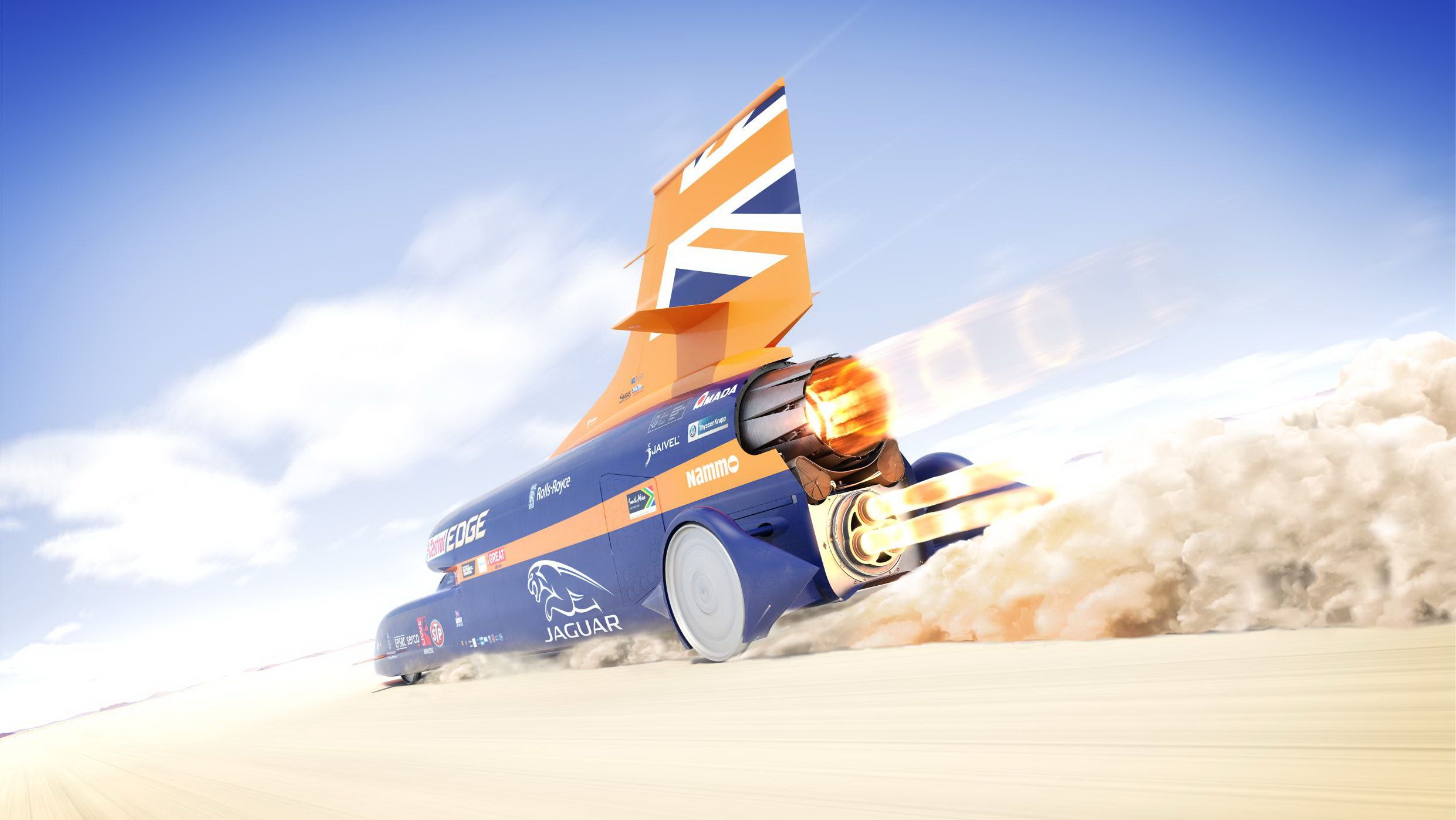With 1,000 liters of High Test Peroxide onboard to power its rocket engine, the 1,000-mph, 2014 Bloodhound SSC could become a bomb if temperatures within its tightly packed fuselage get too high. Each liter of HTP has roughly the same explosive force as a stick of dynamite when it starts to decompose at 40°C (just 104°F). That means cooling the system is not only hugely important, but also massively challenging, when you consider that ambient temperatures routinely hit 100°F at the Hakseen Pan in South Africa where the Bloodhound SSC->ke4876’s initial trials->ke4876 will begin. The fact that the supercharged Jaguar->ke39 V-8 — which pumps 900 liters of HTP to the engine in just 20 seconds — is situated right next to the HTP tank further complicates matters. Oh, and temperatures inside the hybrid->ke147 rocket engine will hit 3,000°C.
To solve the heat problems, Bloodhound SSC engineers have sourced some innovative insulating coatings from a company called Zircotec. The Jaguar exhaust has been coated with a substance called Thermohold, which is plasma sprayed on to surfaces at twice the speed of sound (Did they hear a bunch of tiny sonic booms?), and reduces surface temperatures by 30 percent.
In the past, most land-speed->ke1948-record car bodies have been made of steel or aluminum instead of carbon fiber, which melts at much lower temperatures, but that’s not the case with Bloodhound SSC. To prevent both its jet and rocket engine from turning it into a steaming puddle of plastic, its carbon body panels have been coated with Thermohold for Composites, which is sprayed on at 10,000°C (about 18,000°F) in a way that doesn’t damage the panels and lowers temperatures by about 100°C (over 200°F). Zircotec has also supplied special heat shields, called Zircoflex, which are flexible, adhesive panels just 0.3 mm thick and can withstand temperatures up to 500°C.
Continue reading for the full story.
Why it matters
The numbers and forces that will be at work within Bloodhound SSC are truly amazing. Between its EJ 200 jet engine and hybrid rocket engine, it will produce 135,000 horsepower. It should only take 55 seconds to get to 1,000 mph, at which point it will be pushing against 20 tons of drag. If you fired it straight into the air, it would go 25,000 ft. into the atmosphere, and its aluminum wheels have to withstand 50,000 Gs at their rims.
Initial construction is expected to wrap up later this year in Bristol, England, after which current land-speed record-holder and former Royal Air Force pilot, Andy Green, will begin putting it through its paces in South Africa. Speeds will gradually ramp up from there, with the final 1,000 mph run slated for sometime in 2017.
Stay tuned!
2014 Bloodhound SSC
Read our full review here.

